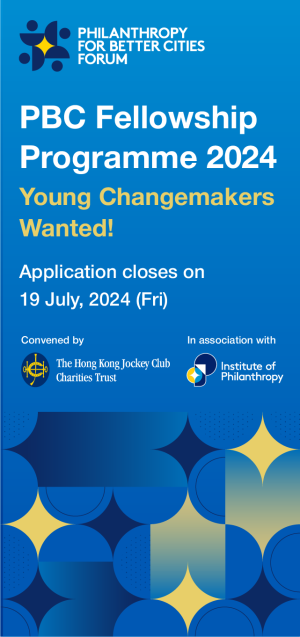Numerous tools exist to help foundations that are committed to learning and improving. NCRP designed its new project called “Philamplify” to complement these tools and to break the “isolation bubble” in philanthropy that keeps foundation leaders from getting honest feedback about their strategies and practices. Philamplify combines expert assessments of individual foundations with an interactive website where people who care about philanthropy may be part of the discussion about what foundations are doing well and how they can be more impactful.
Because Philamplify includes a survey of grantees, some may wonder how our initiative differs from the Center for Effective Philanthropy’s Grantee Perception Report, a tool of which NCRP is a big fan. Here are my top five reasons why Philamplify is different from and complementary to the GPR.
- Philamplify is not an opt-in assessment tool.
Many forward-thinking grantmakers see the value in having CEP conduct a GPR, yet many other large grantmakers aren’t actively seeking feedback. Other sectors of society have built-in accountability mechanisms that philanthropy lacks. Without these feedback loops, even the most well-intentioned grantmaker is going to have blind spots.
NCRP invites and encourages foundations to participate in our assessment process but it is not a prerequisite for a Philamplify assessment. We want to know how our tool can be most useful for a particular foundation’s learning. We are open to adjusting the methodology and timing based on the foundation’s circumstances. If, after discussions with the foundation, we believe that our assessment may add value to what they already know, then we will proceed – even if the foundation would prefer that we not.
- Philamplify assessments examine the nexus of strategy and social justice.
Our Philamplify reports are comprehensive and nuanced, examining foundation goals and strategies, outcomes and impact, partnership with grantees, and best practices in grants management and governance. Building on the aspirational benchmarks in Criteria for Philanthropy at its Best and the concept of strategic social justice philanthropy described in Real Results, NCRP’s assessment tool puts issues of equity and access front and center by asking the following questions:
- Given its mission and goals, is the foundation appropriately seeking to benefit or empower underserved communities?
- Is the foundation applying an equity lens or analysis to its grantmaking?
- Is the foundation addressing disparities in outcomes for the issues or constituencies it prioritizes?
- Does the foundation pursue systemic change strategies?
- Is the foundation leveraging its limited dollars in ways that are consistent with the foundation’s mission and goals?
And while GPRs offer comparative data that allow foundations to benchmark their progress against their peers, Philamplify does not. Instead, we assess each foundation against its stated goals, strategies and intended impacts. To help answer questions on these topics, NCRP’s methods include a grantee survey. However, if a foundation selected for assessment has recently conducted a GPR, NCRP may decide not to conduct its own grantee survey.
- Philamplify draws on data beyond grantee surveys.
Grantee surveys are just one component of our methodology to collect candid, confidential insights about a foundation’s strengths and challenges. We also reach out to peers and others stakeholders knowledgeable about the foundation, such as media and government, former foundation staff and board, current staff (if the foundation permits) as well as selected grantees. These interviews are augmented by extensive reviews of publicly available information and news about the foundation and its grantmaking, and analysis of key Foundation Center data.
- NCRP shares all assessment results with the public.
Many foundations are committed to learning, and they commission assessments and evaluations of various types, including GPRs. Not all of them share the findings of GPRs with the public; in fact, only 30 grantmakers have done so. Many do not share the complete results with grantees or even with their own staff. NCRP shares every Philamplify report first with the foundation being assessed, before the report is finalized, and then with the public. We believe that everyone in philanthropy can glean lessons from the reports’ findings and recommendations, and that everyone in the sector can play a role in holding each other accountable to high standards of philanthropic practice.
- Philamplify fosters online discussion and debate of assessment results.
Foundations that commission GPRs and share them with the public are exemplars of transparency and demonstrate the value of collective learning. Yet, there are few forums in philanthropy to comment on, discuss and debate the lessons that come from such an assessment. That’s why NCRP combines our assessments with an interactive website, where anyone can agree or disagree with our recommendations, comment on them, and share their own opinions and stories about the role of philanthropy in their community and society at large.
When philanthropy is no longer isolated from honest, constructive feedback – whatever the vehicle – families, communities and causes that foundations care about will be the true beneficiaries.
Lisa Ranghelli is director of foundation assessment at NCRP. Follow #Philamplify on Twitter.






Comments (0)